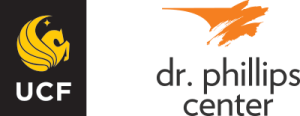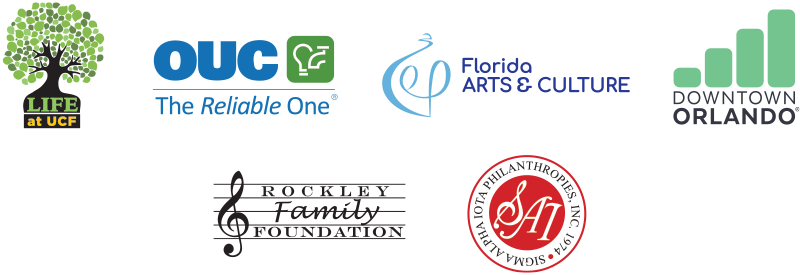-
Saturday, Apr 5, 2025, 7:30 p.m.
- Steinmetz Hall
- Purchase Tickets
- Jump to Program
The UCF Symphony Orchestra performs music inspired by our planet and its celestial surrounding, including contemporary works and Sibelius’s Symphony No. 2.
-
Saturday, Apr 5, 2025, 7:30 p.m.
- Steinmetz Hall
- Purchase Tickets
- Jump to Program
The UCF Symphony Orchestra performs a concert inspired by the landscape and culture of our planet, as well as by our celestial surroundings. Jean Sibelius’s Symphony No. 2, composed between 1901 and 1902, is deeply intertwined with the Finnish landscape and culture; the symphony’s pastoral themes evoke the serene and rugged Finnish countryside, with its vast forests and tranquil lakes. Grammy Award-winning composer Jessie Montgomery composed her reflective Hymn for Everyone in 2021, and described the piece as a “catharsis,” inspired by a melody that came to her unexpectedly during a hike. Roger Zare’s fascination with astronomy inspired him to compose NEOWISE about the comet which became visible to the naked eye in July 2020.
Student tickets: $10 off with code ILOVEUCF2025, valid UCF or student ID required.
Program
Hymn for Everyone — Jessie Montgomery (b.1981)
Lina Jeong, graduate assistant conductor
NEOWISE — Roger Zare (b.1985)
BRIEF INTERMISSION
Symphony No. 2 in D major, op.43 Jean Sibelius (1865-1957)
Allegretto
Andante, ma rubato
Vivacissimo
Finale: Allegro moderato
Program Details
Hymn for Everyone Jessie Montgomery (b. 1981)
Jessie Montgomery is a composer, educator, and violinist. She was born in the Lower East Side of Manhattan. Her interest in music at an early age came from being raised by her father who is a musician and mother who is a theatre artist. At age 4, she began studying violin which started her lifelong passion for classical music. Alice Kanack, her violin teacher, encouraged her to explore improvisation which has become a distinct quality to her compositional language. In her early teens, she was writing music. She was writing piano trios at age 11 and then took composition lessons throughout high school.
In an interview, Montgomery shares how she got started working on Hymn for Everyone
“Originally, I was working on an orchestral suite… Then I sort of switched mid-stream to reference back to this theme, this hymn, I had written during the pandemic, during the summer/fall of 2020. It was a vocal-like tune, and I had named it Hymn for Everyone. Then I thought maybe it might be something that would also have a lyrical aspect to it, which would be suited well to the really rich playing of the CSO. For my first piece out of the gate, I thought that would be a nice way to go.”
The melody is a “made-up tune” that feels like a hymn. The beginning notes of the melody are inspired by the hymn “Lift Every Voice and Sing” (1900). Leader of the National Association for the Advancement of Colored People (NAACP) James Weldon Johnson wrote the hymn as a poem and his brother, composer John Rosamond Johnson, wrote the music. The song is often referred to as the Black National Anthem. Hymn for Everyone is also a musical tribute to Montgomery’s mother who passed away in May 2021. After her mother’s passing, the composer found a poem that she wrote entitled, “Poem for Everyone.”
The melody of Hymn for Everyone gets passed around all the sections of the orchestra. Montgomery treats the melody as a chorale that gets distributed around the orchestra but not in a complicated manner, “It’s a simple piece. I meant it to be simple so I can explore orchestration. There’s a big brass chorale in the middle, sort of anchoring everything. It starts really slowly with the viola section and then builds as the piece goes on.” The piece begins slowly with lush textures, first in the violas. The expansive brass chorale marks the middle section and the piece continues to diminish into a quiet meditation at the end.
In her program notes, Montgomery writes,
Hymn for Everyone is based on a hymn that I wrote during the spring of 2021 that was a reflection on personal and collective challenges happening at the time. Up until that point, I had resisted composing “response pieces” to the pandemic and social-political upheaval, and had been experiencing an intense writer’s block.
But one day, after a long hike, this hymn just came to me—a rare occurrence. The melody traverses through different orchestral “choirs”, and is accompanied by the rest of the ensemble. It is a kind of meditation for orchestra, exploring various washes of color and timbre through each repetition of the melody.” -Jessie Montgomery
Program notes by Lina Jeong
NEOWISE Roger Zare (b. 1985)
During the summer of 2020, a rare sight emerged in the night sky. Comet NEOWISE rounded the sun and spent weeks visible to the naked eye during July. Only discovered months earlier, NEOWISE became the most impressive comet to fly by our planet in decades. I have always been an avid follower of astronomy and remember vividly seeing comet Hale-Bopp in 1997, amazed by its sinewy shape and pale glow. Since then, there have not been any comets visible to the naked eye in the northern hemisphere until NEOWISE. The year 2020 was marred by the global Covid-19 pandemic. Many countries, including the United States, locked down to slow down the spread of this extremely contagious disease, disrupting the lives of countless people around the world. While humanity was unable to do so many things that had been taken for granted, nature put on a show.
This piece portrays the journey of comet NEOWISE through the inner solar system from our viewpoint on Earth. As the comet very gradually gains speed falling towards the sun, the music begins distantly and mysteriously, with an undulating carpet of sound in the strings supporting a questioning clarinet solo. Low brass chords swell in and out of focus and gradually replace the woodwinds, leading the music to grow in speed and energy. The woodwinds sing a graceful and winding melody over a blanket of delicate strings and tambourine rhythms, continuing to build steam as the comet accelerates towards Earth. Rounding the sun, the comet's coma expands and the music blossoms, suddenly pulling back in speed and scope and returning to the vast openness where the music began. A solo bassoon imitates the original clarinet solo, and the brass chords turn into a luminous chorale that launches the music to a high velocity once again. A more massive climax punctuated by bells and resounding brass chords sees NEOWISE traverse our skies. As the comet speeds away from us, the mysterious texture from the opening returns a final time. The clarinet solo also returns, but now from offstage, distant echoes from an eventful close encounter with the Earth.
NEOWISE was commissioned by the Trinity Symphony Orchestra, directed by Dr. Joseph Kneer, with generous support from the Stieren Arts Enrichment Grant.
Program notes from Roger Zare
Symphony No. 2, op. 30 (“Romantic”) Howard Hanson (1896-1981)
Jean Sibelius is the best symphony composer Finland has ever had to offer. Sibelius studied at the Finnish Normal School as a child and initially intended on becoming a lawyer, having enrolled in the law program at the University of Helsinki.After he decided to pursue music instead, he first intended on focusing on the violin but soon turned his attention towards composing. Sibelius studied composition primarily with Martin Wegelius, a music professor at Helsinki. It was at Helsinki in 1902 thatSibelius conducted the premiere of his second symphony, Symphony No. 2 in D Major,Op. 43. It received an enthusiastic reception, and the symphony was played again only just two days later. The people of Finland at the time held this symphony as a symbol of hope in such a tumultuous time for the country.
The first movement of this symphony, Allegretto, functions as a puzzle of several different musical ideas and themes gradually converging to create a complete composition. A proud three note melody finds its way through the disorder at the climax of the movement. Tempo, Andante, ma rubato, the second movement, although slow, continues to stir the emotion of the entire symphony, with the cello and bass line plucked behind an almost ominous bassoon line when a lyrical melody interrupted in the rest of the orchestra. The third movement begins at a blistering tempo. Vivacissimo– Lento e suave is a fast and lively movement. The string line is dynamic and only pauses for a moment to allow a pastoral trio to play until the music finally segues into the last movement, Allegro moderato. The final movement is the most famous out of the four. Again, a three-note melody takes the focus in the music and is even more triumphant and heroic than the first movement. The theme ultimately finds its home within the brass section. It’s as if the symphony has undergone a transformation, emerging powerful and majestic.
Program notes by Jessica Trygstad
UCF Symphony Orchestra
Robert G. Hasty — conductor
Lina Jeong — graduate assistant conductor
Profile: Robert G. Hasty
Robert G. Hasty is the Music Director of the Kenosha Symphony Orchestra and the Director of Orchestral Activities at the University of Central Florida School of Performing Arts. He is also Artistic Director of the International Schools Choral Music Society. For 22 years, Hasty conducted the Chamber Orchestra and the Philharmonia at the Henry and Leigh Bienen School of Music at Northwestern University where he also served as the Associate Director of Orchestras.
Hasty began his career teaching music in the public schools in Southern California; this included tenure in administration as the District Music Coordinator of the Capistrano Unified School District where he supervised the K-12 music education program and its staff of 39 teachers. He also served an elected term as Vice President in charge of String Education for the Southern California School Band and Orchestra Association.
A noted researcher in music cognition, Hasty has been an author for two publications delivered at the 7th International Conference on Music Perception and Cognition in Sydney, Australia. His research on conducting was published in 2005: “Critical Listening While Conducting”. The European Society for Cognitive Sciences of Music invited him to speak at their conference in Portugal on these studies.
As a conductor, Hasty has appeared with the All-American College Orchestra at Walt Disney World, Beijing Youth Orchestra, Elmhurst Symphony Orchestra, Festival Internacional Sesc de Música Orquestra Sinfônica Acadêmica, Grant Park Symphony Orchestra, Highland Park Strings, Irvine Youth Symphony, La Primavera Orchestra, Merit Symphony Orchestra, Metropolis Youth Symphony, National High School Music Institute Orchestra, Northwestern University Symphony Orchestra, NU Opera Theater, NU Contemporary Music Ensemble, and the Piedmont Chamber Orchestra. His performances have been broadcast on WFMT radio in Chicago and on the Big Ten Network.
Hasty’s international engagements include sold-out performances at the National Concert Hall of Taipei, Taiwan, the Forbidden City Concert Hall in Beijing, China, the Shanghai Oriental Arts Center Concert Hall and the Shanghai Symphony Orchestra Concert Hall in Shanghai, China, Theatro Guarany in Pelotas, Brazil, the Busan Cultural Center Main Theater in Busan, South Korea, and the Suzhou Culture and Arts Centre Grand Theatre in Suzhou, China. He is sought-after as an honor orchestra conductor, conducting honor groups across the United States. He is a member of the conducting and music education faculties at the UCF School of the Performing Arts.
Hasty has also spent his career as a freelance violinist and violist, having been a student of Alice Schoenfeld at the USC Thornton School of Music. These days, you will find him fiddling in several clubs and venues with various bands, including as fiddler and vocalist for singer-songwriter Christina Trulio (ASCAP). Noted as an "avid cyclist" by the Chicago Tribune, he trains for official century rides every year. Bob is especially proud to have been appointed as the newest member of the Dancing Bohemian Ukulele Team.
Profile: Lina Jeong
Lina Jeong is a graduate student at the University of Central Florida where she studies orchestral conducting. Jeong earned a master’s degree in music education from Northwestern University with a professional emphasis in conducting and violin under the tutelage of Victor Yampolsky. She completed her undergraduate studies in music and French at Loyola University Chicago where she studied violin with MingHuan Xu and conducting with Frederick Lowe.
Jeong furthered her conducting studies at competitive summer music festivals and masterclasses with Lina Gonzalez-Granados, Atlanta Symphony Orchestra musicians, Larry Livingston, Mark Gibson, Erin Freeman, Gary Lewis, and Miguel Harth-Bedoya. She was selected for the Early Career Program with Girls Who Conduct for consecutive seasons under the mentorship of Helen Cha-Pyo and Tiffany Chang. She was the conductor for the Northwestern University Music Academy in preparation for their 2023 Europe tour. Jeong has guest conducted the Loyola University Chicago Symphony Orchestra and Wind Ensemble.
As a violinist, Jeong has performed in masterclasses for the Kronos Quartet, Almita Vamos, and Liba Shacht. Jeong collaborated with composition students from the Chicago College of Performing Arts for premieres, recordings, and recitals. At Northwestern University, she performed in recitals with horn player Gail Williams and cellist Sydney Lee.
Committed to building community through music and supporting young musicians, Jeong co-founded a volunteer orchestra in Chicago that performed in nursing homes and for benefit concerts. As an educator, studio teacher, and guest clinician, Jeong has worked with students of all ages in Wisconsin, Illinois, and Florida. Her violin studio students have received top ratings at festivals and performed as principal players in youth orchestras. As an advocate for advancing music and arts education, Jeong contributes to professional communities through presentations at state music conferences and national music conferences, as well her service on the National Wellness Committee for the American String Teachers Association.
**Concertmaster, *Principal
Violin
Tara Bolos
Isabella Braghi
Alyssa Corbin**
Dylan Dragone*
Graham Frankenberger
Amy Gonzalez
Abby Goodman
Emmaline Kealoha
Angelia Koppenhoefer
Kristina Kycyku
Sarah Marshall
Alex McIlroy
Julie Rader
Sebastian Sanchez
Lucas Paul Velasco
Trace Welch
Viola
Michael Arflin
Emily Bittar
Andrew Dyer
Druso Fulford
Julitza Geiger
Amell Hernandez
Dominic Jones
Pam Leadbitter
Jinna McDonald
Tyler Shields
Jessica Trygstad*
Cello
Detrick Davis
Jackson Day
Andrew Hoang
Kayja Jones
Annabella LeBiondo
Christian Ovalle
Madison Tedder
Ben Walding*
Nate Waldstein
Bass
Andi Bond
Sebastian Rivera*
Charles Storch
Piccolo
Armaan Gandhi*
Flute
Andres Diaz*
Armaan Gandhi
Jia High
Oboe
Valentina Abreu-Diaz
Chloe Calderon*
English Horn
Vanessa Psarakis
Clarinet
Jaden Crawford+
Cody Hale#
Bassoon
Lance Harmon
Brenna Hellhake*
Horn
Owen Burow
Giovanni Jimenez
Grace Halula
Ignacio Souchet*
Trumpet
Ayden Perez-Prada*
John Prenrod
Jose Matamoros
Trombone
Emile Hernandez*
Jacob Stewart
Bass Trombone
Harrison Cloninger
Tuba
Blake Roberson
Percussion
Joseph Cassidy
Simon Giacalone
Skylar Pearson
Caleb Schmaus
**Concertmaster
*Principal
#Principal on Montgomery and Zare
+Principal on Sibelius

Thank You to Our Supporters




Sponsored in part by the State of Florida through the Division of Arts and Culture and the National Endowment for the Arts.
- The Judith and David Albertson Endowment in the Arts
- Cartwright Family Humanities & Arts Endowment
- Phil and Jane Easterling
- LIFE at UCF
- Orlando Downtown Development Board
- OUC – The Reliable One
- Women’s Club at UCF, Inc.
Thank You to Our Festival Partners
- Dr. Phillips Center for the Performing Arts
- National Young Composers Challenge
- Orlando Family Stage
- Orlando Shakes
- Orlando Philharmonic Orchestra
- UCF College of Health Professions and Sciences
- UCF School of Modeling, Simulation and Training
